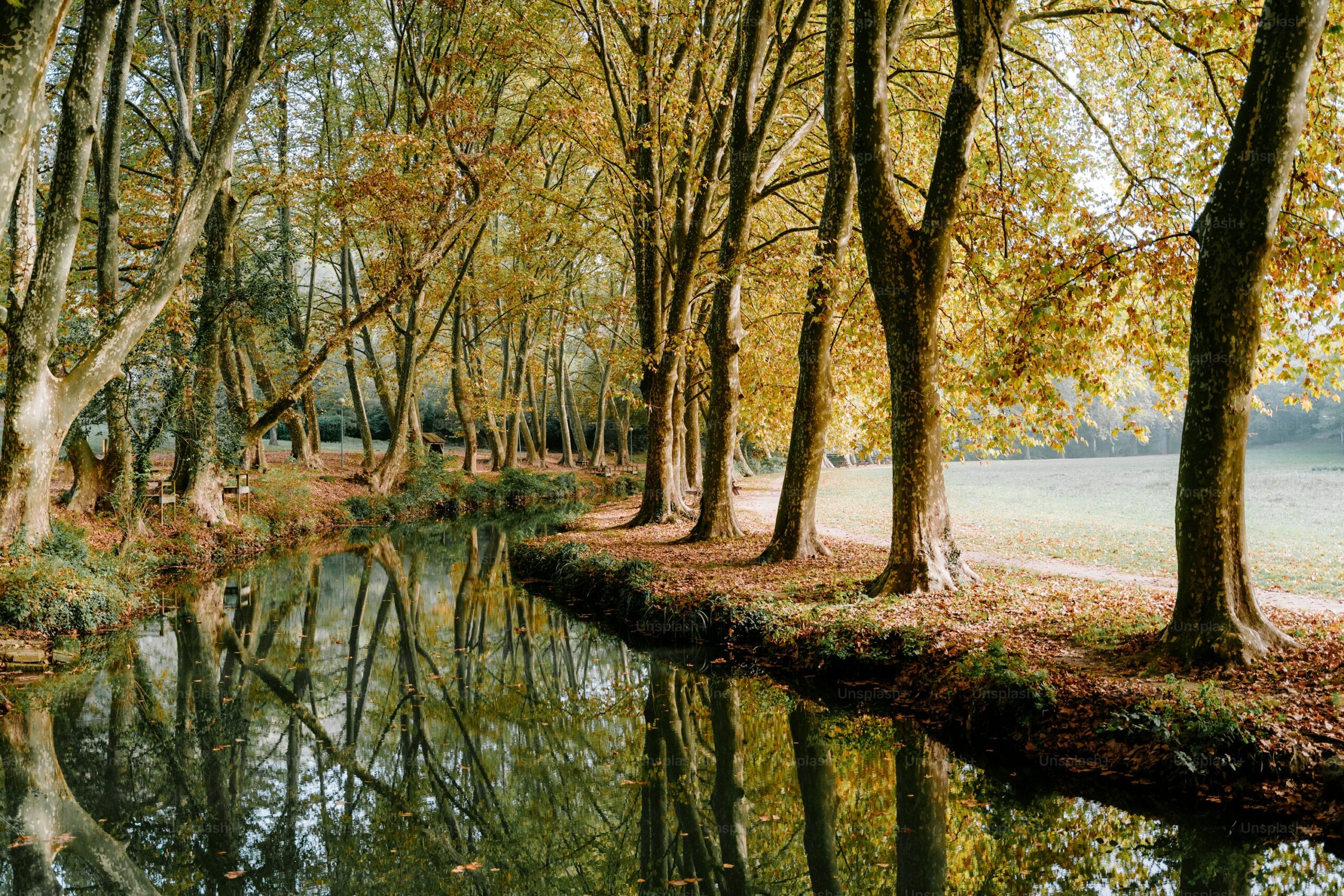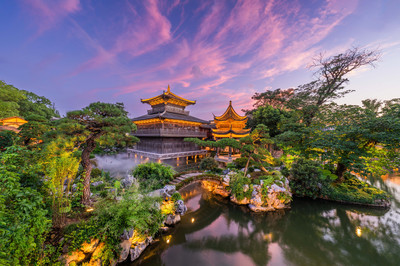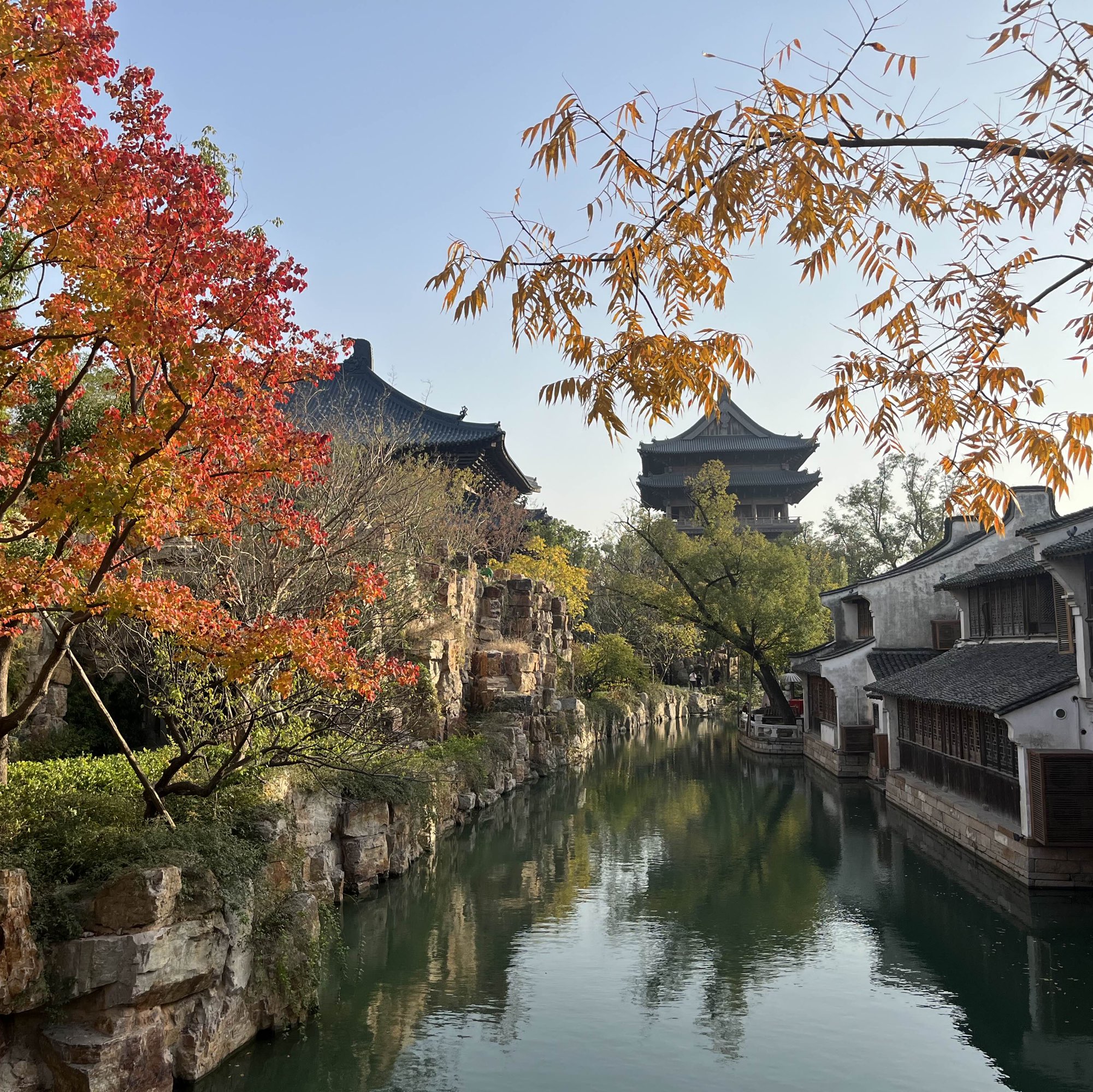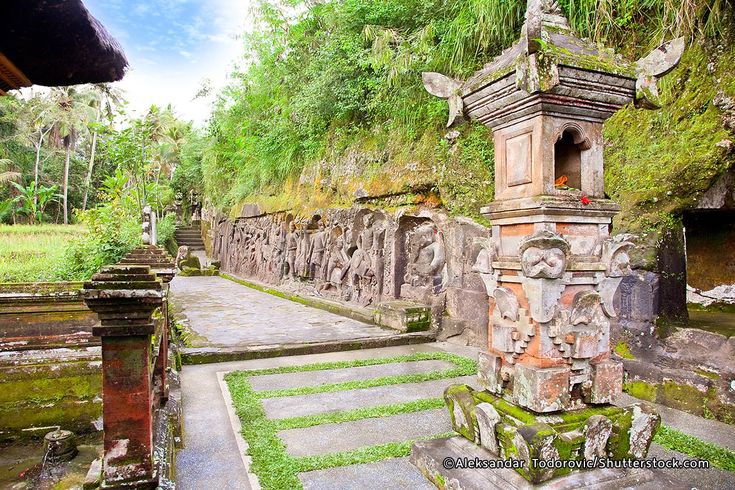Puyulu Ancient City Site: Top Things to See and Do in This Archaeological Wonder

An Essential Guide to Visiting Puyulu_Ancient_City_Site
Nestled within the historic tapestry of China’s northeastern Heilongjiang province, the Puyulu Ancient City Site (蒲与路故城遗址) stands as a testament to the region’s rich cultural heritage and storied past. Once a bustling administrative hub during the Jin Dynasty, this ancient city offers a glimpse into the architectural prowess and societal structures of a bygone era.
With its remnants of towering walls and expansive grounds, visitors are transported back to a time when Puyulu was a focal point of governance and trade, strategically positioned to oversee the vast Heilongjiang river basin. The site, located just northwest of Kedong County, has been meticulously studied and excavated, revealing numerous artifacts that tell the tale of its historical significance and resilience through centuries of conflict and change.
As you wander through the remnants of Puyulu, you’ll find the echoes of ancient civilizations in the earth beneath your feet and the crumbling bricks that once fortified its borders. This is not just a visit to an archaeological site; it’s an invitation to explore the intersections of history and culture, to delve into the narratives of the people who once called this place home. Whether you’re a history enthusiast, an archaeology buff, or simply a curious traveler, the Puyulu Ancient City Site promises an enriching experience that will leave you with a deeper appreciation for China’s diverse heritage.
Prepare to embark on a journey through time, where every step reveals a piece of history waiting to be uncovered.
In This Guide
- An Essential Guide to Visiting Puyulu_Ancient_City_Site
- The Rich History and Legends of Puyulu_Ancient_City_Site
- Main Highlights: What You Absolutely Can’t Miss
- Planning Your Visit: A Practical Guide
- Tickets: Prices, Booking, and Tips
- How to Get There: A Complete Transportation Guide
- Local Cuisine and Accommodation Nearby
- Frequently Asked Questions
- Final Thoughts on Your Trip
The Rich History and Legends of Puyulu_Ancient_City_Site
Nestled in the heart of Heilongjiang Province, Puyulu Ancient City Site (蒲与路故城遗址) stands as a testament to China’s rich and tumultuous history. Once a pivotal stronghold during the Jin Dynasty, this ancient city reflects the cultural and political evolution of northern China.
Dating back to the early 12th century, Puyulu served as the administrative center for the vast territories governed by the Jin Dynasty in the Heilongjiang River basin. Also known colloquially as Kedong Ancient City, it was strategically located near the Wuyuer River, surrounded by marshlands that offered both natural defenses and fertile grounds for agriculture. The city was initially established as a military stronghold and evolved into a bustling hub of trade and governance.
The architecture of Puyulu is particularly noteworthy. The city was designed in an elliptical shape, measuring approximately 1,100 meters from east to west and 700 meters north to south, with a perimeter of about 2,850 meters. The remnants of the city walls, standing at an impressive height of 3 to 4 meters, testify to the construction techniques of the era. Built using rammed earth, the walls showcase layers that vary in thickness, demonstrating the meticulous attention to detail employed by ancient builders.
Archaeological excavations conducted in the 1970s revealed significant findings, including the remains of residential structures, administrative buildings, and artifacts that illustrate the daily life of its inhabitants. Notably, the discovery of the “Puyulu Seal,” a square stamp inscribed with characters from the Jin Dynasty, has provided crucial evidence for historians, confirming the city’s identity as a major administrative site.
Over the centuries, Puyulu faced its share of adversities. The city endured extensive damage during the wars that marked the transition from the Jin to the Yuan Dynasty. By the 14th century, it fell into decline, only to be largely forgotten until its rediscovery in the 20th century. Today, the site is recognized as a National Key Cultural Relic Protection Unit, drawing scholars and tourists eager to explore its storied past.
Visitors to Puyulu Ancient City Site can walk among the ruins, which include remnants of city gates, watchtowers, and residential areas. The site is not merely a collection of stones; each corner whispers tales of ancient rulers, bustling markets, and the everyday lives of those who once thrived here.
As you wander through the echoes of history, you may find yourself captivated by the legends that surround Puyulu. From tales of ancient battles to stories of trade and diplomacy, the city offers a glimpse into a vibrant past that shaped the cultural landscape of northern China. Whether you’re a history enthusiast or simply a curious traveler, Puyulu Ancient City Site promises an unforgettable journey through time, inviting you to immerse yourself in the rich tapestry of Chinese heritage.

Puyulu_Ancient_City_Site.
Main Highlights: What You Absolutely Can’t Miss
At the Puyulu Ancient City Site, a treasure trove of history awaits you. Nestled in the northern reaches of Heilongjiang Province, this ancient city, known as the capital of the Jurchen Jin dynasty, offers an unparalleled glimpse into China’s past. Here are the must-see highlights that you absolutely cannot miss during your visit.
1. The City Walls
The remnants of the ancient city walls are a testament to the city’s historical significance and architectural prowess. Stretching approximately 2,850 meters in circumference and reaching heights of 3 to 4 meters, these earthen fortifications, built with compacted earth, provide an impressive backdrop for photographs. Don’t forget to walk along the walls to appreciate the scale of this ancient structure and imagine the bustling life that once thrived within.
2. The South Gate
As one of the main access points to the city, the South Gate showcases the ingenuity of ancient military architecture. The gate features a semi-circular watchtower that once stood guard against invaders. Be sure to explore the remnants of this structure and envision the strategic importance it held during the Jin dynasty.
3. The Northeast Official Residence
Venture into the northeastern corner of the city to uncover the remains of an official residence. With its foundation and layout still discernible, this site offers insights into the living quarters of the city’s elite. The residence includes a grand hall and a terrace, where you can still see the beautifully crafted steps made of blue bricks, hinting at the grandeur that once was.
4. Archaeological Finds
The site is rich with archaeological discoveries that shed light on the daily lives of its inhabitants. Look out for the array of artifacts on display, including pottery, ceramics from the Ding and Cizhou kilns, and iron tools. The most notable find is the “Puyulu Seal,” a square artifact engraved with ancient characters, which serves as a significant historical marker of the city’s past governance.
5. The Moat
Surrounding the city walls is a protective moat that adds to the site’s historical charm. This water-filled trench not only served as a defensive measure but also provided a vital water source for the city. Walking along the banks of the moat allows for a serene experience, where you can appreciate the natural landscape that once protected this bustling hub.
6. Educational Signage
Throughout the site, informative placards in both Chinese and English provide context to the ruins. They detail the historical significance of each structure and artifact, making your visit not just a walk through ruins, but an educational journey through time. Take your time to read and immerse yourself in the rich history that surrounds you.
7. Scenic Surroundings
The site is enveloped by beautiful natural landscapes, including lush wetlands and grasslands. As you explore the ruins, take moments to enjoy the peaceful ambiance and the local flora and fauna. This tranquil setting enhances the historical experience, making it an ideal spot for reflection and photography.
Conclusion
A visit to the Puyulu Ancient City Site is not merely a stroll through ruins; it’s an opportunity to connect with China’s rich historical tapestry. From the formidable city walls to the fascinating artifacts, this ancient site offers insights into a civilization that once played a vital role in shaping the region. Make sure to dedicate ample time to explore and soak in the history that permeates this remarkable location.

Puyulu_Ancient_City_Site.
Planning Your Visit: A Practical Guide
Planning Your Visit: A Practical Guide to Puyulu Ancient City Site
Nestled in the historical heart of Heilongjiang province, the Puyulu Ancient City Site (蒲与路故城遗址) offers a glimpse into China’s rich history and ancient architecture. As you prepare for your visit, here’s everything you need to know for an unforgettable experience.
Getting There
Location: The Puyulu Ancient City Site is situated approximately 7.5 kilometers northwest of Keding Village in Keshan County, Heilongjiang.
Transportation Options:
– By Car: If you’re driving, take the G101 National Highway towards Keshan. Follow local signs to reach the site.
– Public Transport: Buses and local taxis are available from nearby towns. It’s advisable to check local schedules as they may vary.
– Tours: Consider joining a guided tour for a comprehensive experience, as they often include transport and knowledgeable guides.
Opening Hours
The site is open to visitors daily from 8:00 AM to 6:00 PM. Last entries are typically accepted until 5:30 PM. Plan to spend about 1-2 hours exploring the ruins to fully appreciate the site’s historical significance.
Admission Fees
Entry to the Puyulu Ancient City Site is generally affordable, with ticket prices around CNY 40 for adults. Discounts may apply for children, students, and seniors, so it’s worth asking at the ticket counter.
What to Expect
Site Overview:
Puyulu Ancient City, established during the Jin Dynasty, is an archaeological treasure trove. The site features remnants of walls, gates, and various structures, giving insight into urban planning and architectural techniques from over 800 years ago.
Key Features:
– City Walls: The walls are well-preserved, measuring 3 to 4 meters high, with a base width of 20 meters. Take a stroll along the perimeter to appreciate the scale of this ancient fortress.
– Gateways: The site features two main gates, each with unique architectural styles. These entrances served as critical points for trade and defense during its heyday.
– Excavated Artifacts: Be sure to check out the on-site museum showcasing artifacts unearthed during excavations, including pottery, tools, and the notable “Puyulu Seal”, which provides evidence of the city’s historical significance.
Tips for Visitors
- Wear Comfortable Shoes: The terrain can be uneven, so sturdy footwear is recommended.
- Stay Hydrated: Bring water, especially during the summer months, as amenities may be limited.
- Cultural Respect: While exploring, be respectful of the site’s historical value. Avoid climbing on ruins or disturbing artifacts.
- Photography: Capture the stunning architecture and landscapes, but be mindful of any restrictions on photography in certain areas.
- Guided Tours: Consider hiring a local guide. Their insights can significantly enhance your understanding of the site’s history and archaeological importance.
Nearby Attractions
If you have extra time, explore other historical and cultural sites nearby:
– Kushan Mountain: A beautiful natural area perfect for hiking and enjoying local flora and fauna.
– Local Cuisine: Don’t miss tasting traditional Heilongjiang dishes at nearby restaurants. Ask locals for their recommendations!
– Cultural Festivals: Depending on the time of year, check if any local festivals occur during your visit for an authentic cultural experience.
Final Thoughts
Visiting the Puyulu Ancient City Site is not just a journey into the past; it’s an opportunity to connect with the rich tapestry of Chinese history. With its stunning ruins and captivating stories, this ancient site promises a memorable adventure for any traveler. Prepare well, respect the heritage, and enjoy your exploration of this remarkable piece of history!

Puyulu_Ancient_City_Site.
Tickets: Prices, Booking, and Tips
When planning a visit to the Puyulu Ancient City Site (蒲与路故城遗址), it’s essential to know the details regarding ticket prices, booking procedures, and some handy tips to enhance your experience. This ancient site, steeped in history and archaeological significance, attracts many travelers looking to explore China’s rich heritage.
Ticket Prices
As of 2025, the admission fee for the Puyulu Ancient City Site is approximately ¥30 (around $4.50 USD). This modest fee grants you access to explore the remnants of this fascinating historical site, which dates back to the Jin Dynasty.
Booking Tickets
While tickets can often be purchased at the entrance, it’s advisable to book in advance, especially during peak tourist seasons. You can reserve your tickets online through various travel platforms such as Trip.com or through local tourism websites. This not only guarantees your entry but also allows you to skip potential queues on busy days.
Opening Hours
The site typically operates from 8:30 AM to 6:00 PM, with the last entry at 5:30 PM. Be sure to plan your visit accordingly, allowing at least 1 to 2 hours to fully appreciate the site’s historical significance and explore its various ruins.
Tips for a Great Visit
-
Get There Early: Arriving early will help you avoid crowds and give you a quieter experience as you wander through the ancient structures.
-
Wear Comfortable Shoes: The site involves walking over uneven terrain, so comfortable footwear is a must.
-
Bring Water and Snacks: While there may not be many amenities on-site, having water and light snacks can help you stay refreshed as you explore.
-
Understand the History: Familiarize yourself with the historical context of the site before visiting. This knowledge will enrich your experience and appreciation of the ruins.
-
Guided Tours: Consider joining a guided tour if available. Local guides can provide valuable insights and stories that bring the ancient city to life.
-
Photography: Don’t forget your camera! The Puyulu Ancient City Site offers stunning visuals, from the remnants of the city walls to the lush landscapes surrounding the area.
By preparing ahead of time and following these tips, your visit to the Puyulu Ancient City Site can be both enjoyable and educational, allowing you to immerse yourself in one of China’s lesser-known historical treasures.
How to Get There: A Complete Transportation Guide
Reaching the Puyulu Ancient City Site (蒲与路故城遗址) is a journey steeped in history and scenic vistas, making it an adventure worth undertaking. Here’s your essential guide to navigating this fascinating destination.
By Air
The nearest major airport to Puyulu Ancient City Site is Harbin Taiping International Airport (HRB), located approximately 200 kilometers to the southwest. This airport offers a variety of domestic flights and a few international connections.
Upon arriving at the airport, you can either rent a car for a scenic drive or take a bus or taxi directly to your destination.
By Train
For those preferring train travel, the city of Qiqihar serves as the most convenient rail hub. The Qiqihar Railway Station has regular services connecting it to major cities across China, including Harbin and Beijing.
From Qiqihar, you can take a short taxi ride or local bus to reach Puyulu Ancient City Site, which is about 40 kilometers away.
By Bus
Local buses frequently operate from Qiqihar to nearby towns, including the village of Gucheng, which is closest to the site. The bus journey offers a window into the rural landscapes of Heilongjiang Province.
- Departure Point: Buses can be found at the Qiqihar Long-Distance Bus Station.
- Travel Time: Approximately 1-1.5 hours, depending on traffic.
By Car
Driving to Puyulu Ancient City Site is an excellent option for those who enjoy flexibility. The site is accessible via G10 (Harbin-Dalian Expressway) and then turning onto local roads towards Gucheng Village.
- Distance: About 40 kilometers from Qiqihar.
- Estimated Driving Time: 45 minutes to 1 hour.
Local Transportation
Once you arrive at Puyulu, local taxis and bike rentals are available for exploring the site and its surrounding areas. Walking is also a pleasant way to soak in the ancient ruins and scenic views.
Tips for Travelers
- Best Time to Visit: Spring and autumn are ideal for pleasant weather and beautiful scenery.
- Accommodation: Consider staying in Qiqihar for a wider range of hotel options, or look for guesthouses closer to the site for a more immersive experience.
- Local Cuisine: Don’t miss trying Heilongjiang’s local dishes, which can be found in nearby eateries.
With this guide in hand, you’re well-equipped to embark on your journey to the Puyulu Ancient City Site, where history and culture await your exploration!

Puyulu_Ancient_City_Site.
Local Cuisine and Accommodation Nearby
When visiting the Puyulu Ancient City Site, travelers can immerse themselves not only in the rich history of this remarkable archaeological treasure but also in the flavors of the local cuisine. The area surrounding the site offers a variety of dining options that will surely enhance your journey.
Local Cuisine
1. Traditional Dishes:
– Lamb Skewers: A must-try in this region, these skewers are seasoned with a mix of spices and grilled to perfection, offering a smoky flavor that captures the essence of local grilling traditions.
– Hand-Pulled Noodles (Lanzhou Lamian): Freshly made and served with a flavorful broth, these noodles are a comforting option, often garnished with fresh herbs and chili oil for an extra kick.
– Steamed Buns (Mantou): Soft, fluffy buns filled with savory fillings, these are perfect for a quick snack while exploring the ancient ruins.
2. Local Snacks:
– Dumplings (Jiaozi): Juicy and packed with flavor, these dumplings can be found in various forms—boiled, steamed, or pan-fried. Dip them in soy sauce or vinegar for an authentic experience.
– Spicy Tofu: A unique dish that combines tofu with a spicy sauce, often served with scallions and sesame oil. It’s a delightful addition to any meal.
3. Sweet Treats:
– Sesame Balls (Jian Dui): These deep-fried glutinous rice balls filled with sweet red bean paste are a popular dessert option, offering a crunchy exterior and a soft, chewy inside.
Nearby Accommodation
After a day of exploring the Puyulu Ancient City, retreat to one of the nearby accommodations that cater to various preferences and budgets:
1. Ancient City Hotel
– Description: Located just a short distance from the site, this hotel offers comfortable rooms with a traditional Chinese decor. Guests can enjoy stunning views of the ancient landscape.
– Amenities: Free Wi-Fi, on-site restaurant serving local cuisine, and a garden for relaxation.
2. Riverside Inn
– Description: This charming inn boasts picturesque views of the nearby river and is known for its warm hospitality. Ideal for travelers looking for a cozy and intimate atmosphere.
– Amenities: Complimentary breakfast, bicycle rentals, and guided tours to local attractions.
3. Puyulu Eco Lodge
– Description: Emphasizing sustainability, this eco-friendly lodge offers unique accommodations surrounded by nature. It’s perfect for eco-conscious travelers.
– Amenities: Organic meals made from local produce, hiking trails, and cultural workshops.
4. Budget Hostels
– Description: For those traveling on a budget, several hostels are available near the ancient city site. They provide basic amenities and a friendly atmosphere, ideal for meeting fellow travelers.
– Amenities: Dormitory-style rooms, communal kitchens, and access to local tours.
Whether you are savoring the flavors of local dishes or resting in comfortable accommodations, your visit to the Puyulu Ancient City Site promises to be both enriching and delightful. Enjoy your journey through history and culture!

Puyulu_Ancient_City_Site.
Frequently Asked Questions
Here are some frequently asked questions to help you navigate your visit to the Puyulu Ancient City Site (蒲与路故城遗址):
-
What is the best time to visit Puyulu Ancient City Site?
The ideal time to visit is during spring (April to June) and autumn (September to November) when the weather is mild and pleasant. Avoid the summer months, as they can be quite hot, and winter can be chilly with snow. -
How do I get to Puyulu Ancient City Site?
The site is located approximately 7.5 kilometers northwest of Kedong County in Heilongjiang Province. You can reach it by car or take a local bus service from nearby cities. Ensure to check local transport schedules for the most accurate information. -
Is there an entrance fee?
Yes, there is an entrance fee to visit the site, which typically covers access to the ancient ruins and any available guided tours. Check local resources or websites for the most current pricing and potential discounts. -
How long should I plan to stay at the site?
A visit typically takes about 1 to 2 hours, depending on your interest in exploring the ruins and learning about their historical significance. If you enjoy photography or want to soak in the atmosphere, consider extending your visit. -
Are there facilities available at the site?
While the Puyulu Ancient City Site has limited facilities, basic amenities like restrooms and informational signage are available. It’s advisable to bring water and snacks, as there may not be food vendors on-site. -
Can I take photographs at the site?
Yes, photography is allowed at the Puyulu Ancient City Site. The ancient ruins offer stunning backdrops for photos. However, be respectful of the historical significance and avoid using flash in sensitive areas. -
Are guided tours available?
Yes, guided tours are often available and can enrich your experience by providing in-depth historical context. It’s recommended to check in advance for availability and to book a tour if you’re interested. -
Is the site accessible for people with disabilities?
The Puyulu Ancient City Site may present some challenges for visitors with mobility issues due to uneven terrain and limited paved pathways. It’s best to contact local authorities or tour operators for specific accessibility information before your visit.
Final Thoughts on Your Trip
As your journey comes to a close, reflecting on the rich tapestry of history that envelops Puyulu Ancient City Site is sure to leave an indelible mark on your travel experience. This ancient fortress, with its storied past dating back to the Jin Dynasty, stands as a testament to the resilience and ingenuity of civilizations long gone.
Walking through its remnants, you are not merely observing ruins; you are stepping into a narrative that spans centuries, filled with tales of grandeur, conflict, and evolution. The archaeological treasures unearthed here, from intricate ceramics to the remarkable “Puyulu Seal,” provide a glimpse into the lives of those who once thrived in this formidable stronghold.
Whether you wandered through the impressive city walls or marveled at the architectural remnants of the ruling class, each corner of this site invites you to ponder the ancient lives and stories that shaped this region. As you prepare to leave, take a moment to appreciate the profound connection to history that Puyulu offers, a connection that continues to resonate in the present.
So, carry the essence of this ancient city with you as you embark on your next adventure. Let the echoes of the past inspire your future travels, reminding you that every journey is an opportunity to explore not only new destinations but also the depths of human history and culture. Safe travels!